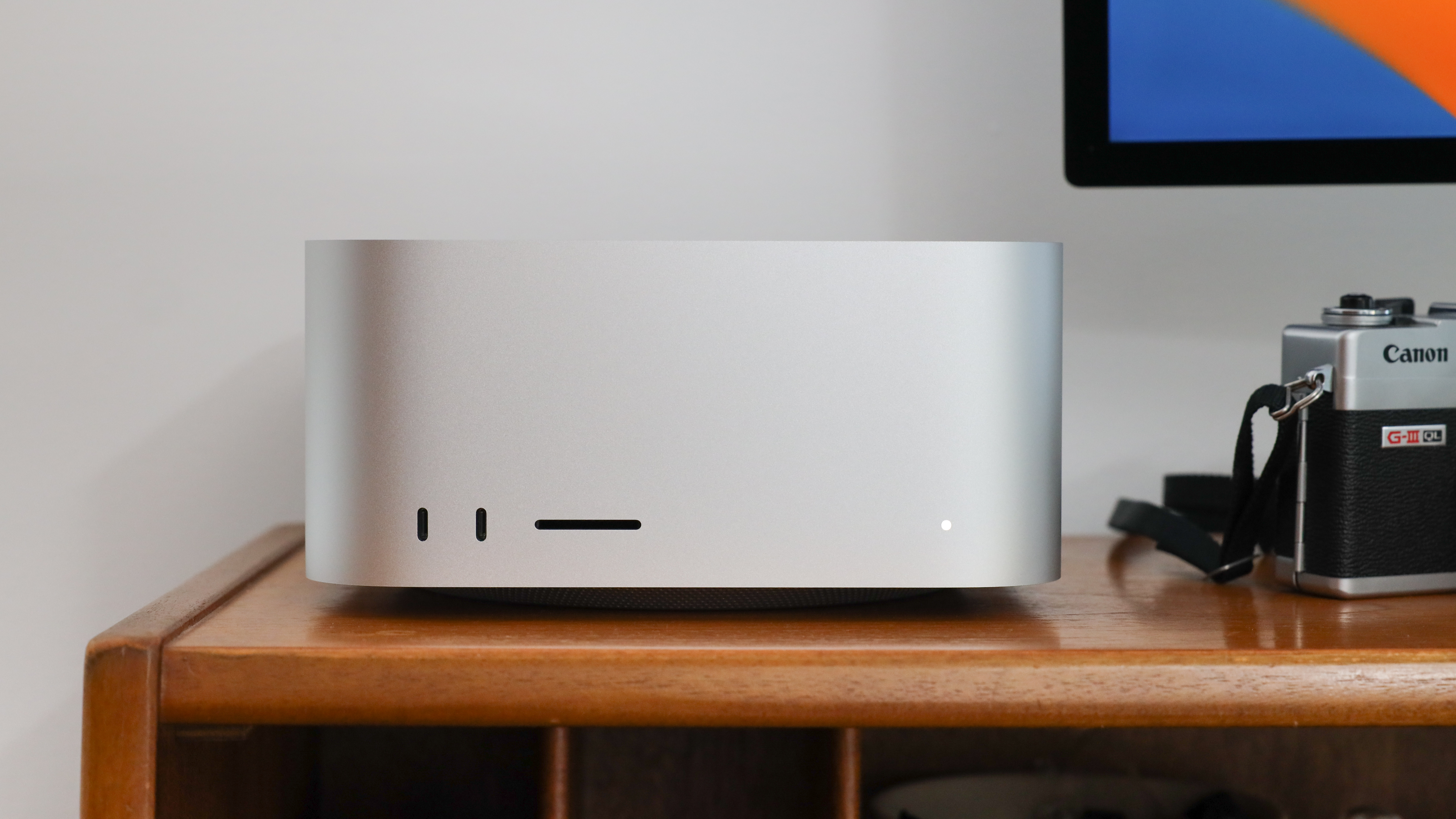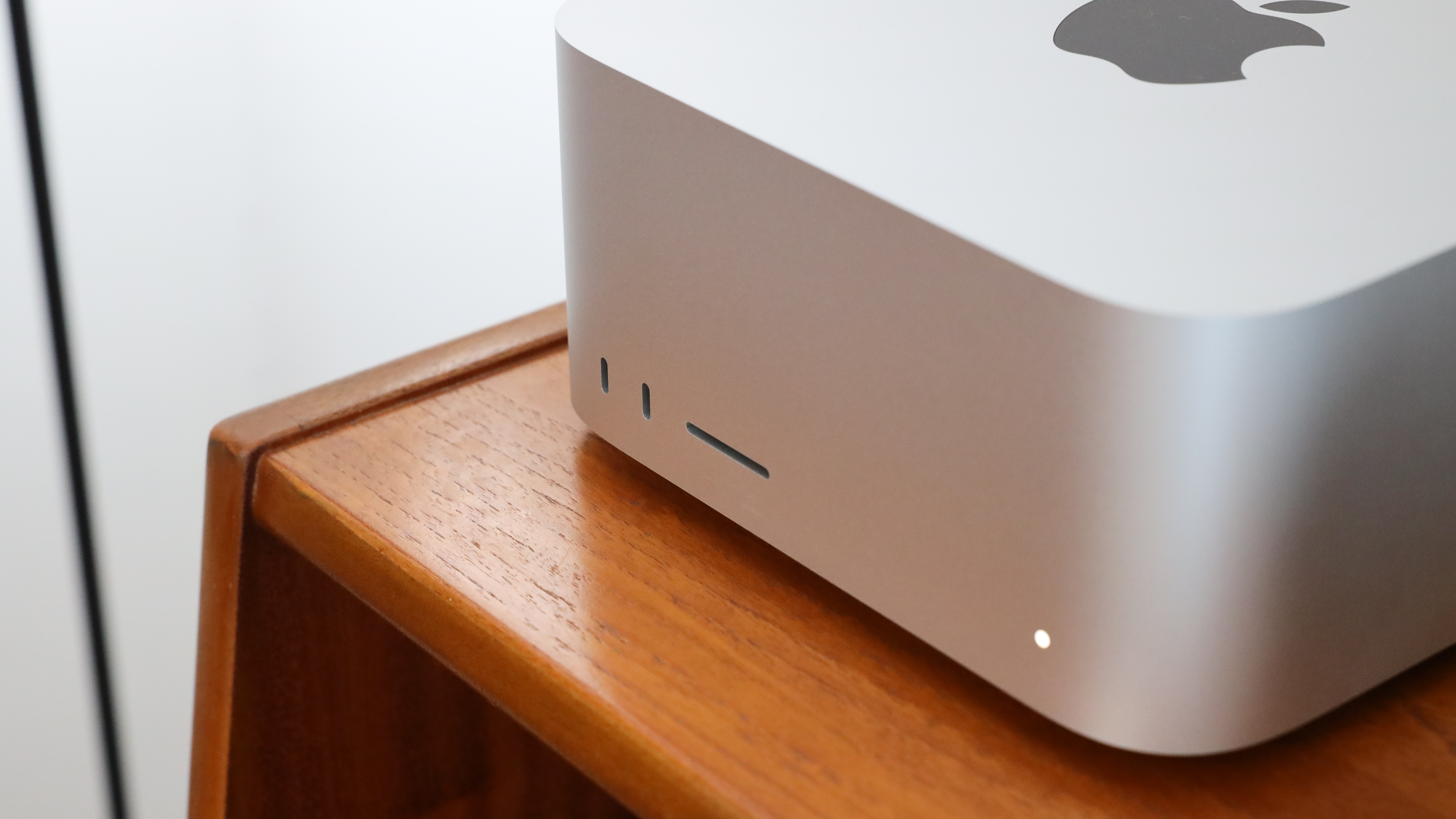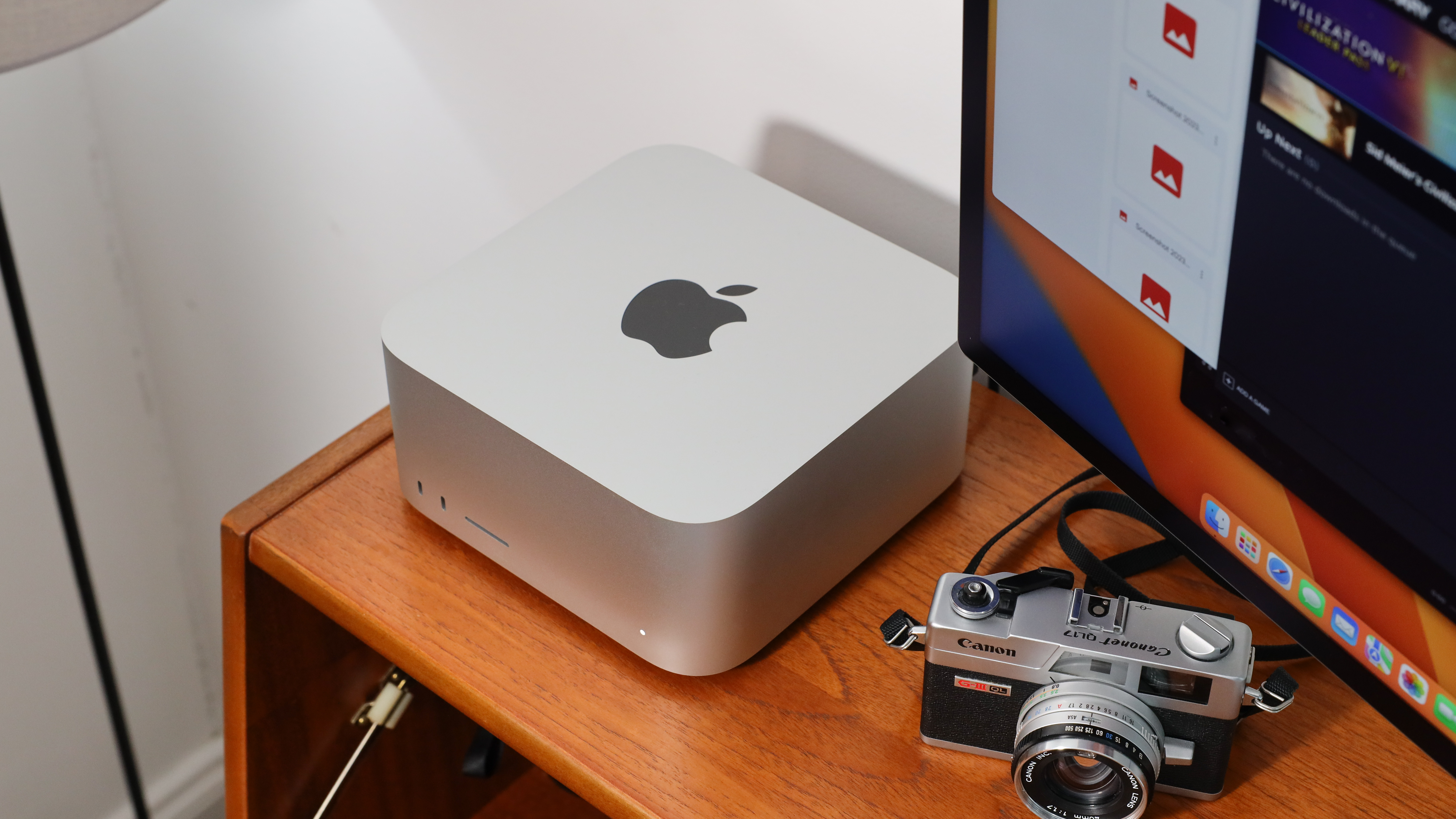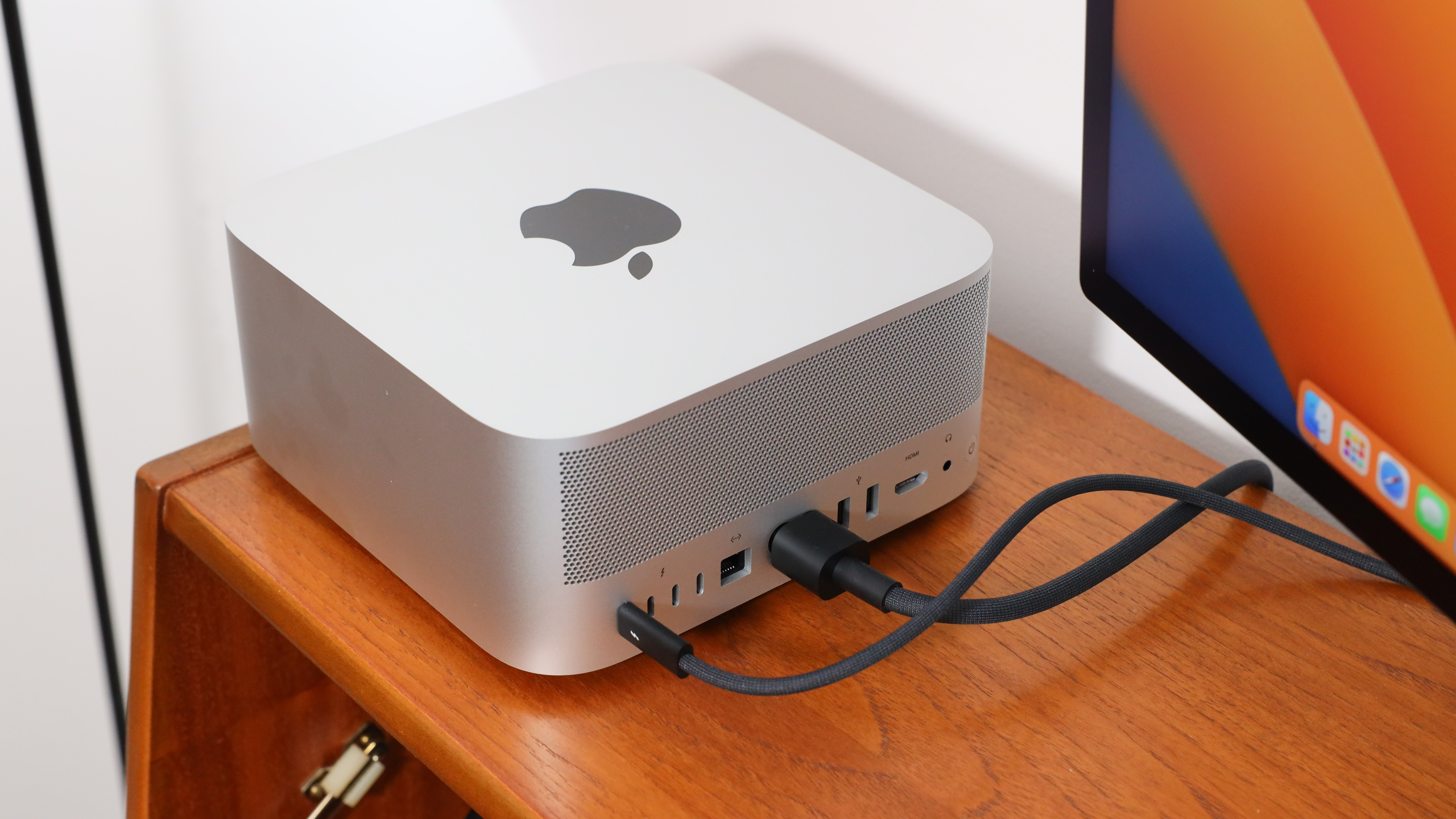Digital Camera World Verdict
The main takeaway I have from this review is that I now want a Mac Studio of my own. Paired with Apple’s Studio monitor, this computer has just been a joy to use for the last few days. For anyone who relies on a lot of resource-intensive programs like video and photo editing software, the power of the Mac Studio is a revelation, and the abundant number of ports and front-facing SD card slot make this ideal for anyone creating a lot of external content. The Studio also just looks pretty on my desk, a little like a prop from a sci-fi film, it is small and compact that just blends in with its inoffensive minimalism. While not cheap by any standards, the base model is within reach of freelancers as well as small studios willing to invest in quality hardware, although gets expensive quickly when specced up.
Pros
- +
Small and compact profile
- +
New M2 chips are ridiculously fast
- +
A lot of power in the most affordable base model
- +
Ports galore
Cons
- -
Speccing out the Studio gets very expensive fast
- -
Speaker still lousy
- -
No parts upgradability
Why you can trust Digital Camera World
Apple introduced its Mac Studio last year as a more affordable and compact version of its shockingly expensive Mac Pro desktop tower. The 2022 Mac Studio M1 introduced the M1 Max and M1 Ultra chips, designed to put powerful hardware in the hands of freelancers and professionals working in creative industries. This year is an evolution of last year's models, with the M1 chips being replaced with the M2 Max and M2 Ultra, promising even greater computing abilities.
The Mac Studio I have been given by Apple for this review has a 12-core CPU, 30-core GPU, 16-core Neural Engine, 64GB of RAM, and a 2TB SSD, this model retails at the time of writing at $2999, however, the 2023 Mac Studio range starts at the much more reasonable price of $1999, with some very good specs at that starting price. The Max Studio, while not exactly pocket change, isn’t a completely unreasonable price, especially if you already have a screen you love. Until you start upping every spec that is, as always, Apple’s parts upgrade prices are pretty ludicrous.
Mac Studio M2: Specifications
M2 Max: 12-core CPU, 30-core or 38-core GPU, 16-core Neural Engine, 400GB/s memory bandwidth, 32GB, 64GB, or 96GB of unified memory
M2 Ultra: 24-core CPU, 60-core or 76-core GPU, 32-core Neural Engine, 800GB/s memory bandwidth, 64GB, 128GB, or 192GB of unified memory
Ports: Four Thunderbolt 4 (USB-C) ports with support for DisplayPort (up to 40Gb/s), two USB-C ports (up to 10Gb/s), two USB-A ports (up to 5Gb/s), Enhanced HDMI port, 10GB Ethernet port, 3.5 mm headphone jack, SDXC card slot (UHS-II)
Wireless: Wi-Fi 6E (802.11ax), Bluetooth 5.3
Dimensions: 9.5 x 19.7 x 19.7 cm
Weight: 2.7kg (M2 Max) / 3.5kg (M2 Pro)
Mac Studio M2: Key Features
The headline feature in the new Mac Studio is the latest generation of Apple silicon, with the powerful M2 Max, and the M2 Ultra – both significant upgrades over the previous M1 chips in the last generation.
With its 12-core processor, the M2 Max is capable of reaching speeds up to 20% faster than the first generation of Mac Studio with M1 Max. Configurable with either a 30 or 38-core GPU delivers up to 13.6 teraflops of graphics performance and is also up to 30 percent faster than M1 Max chip. Rounding it off is up 96GB of unified memory which can deliver a whopping 400GB per second of bandwidth.
The M2 Ultra is the most powerful chip ever put in a Mac. A 24-core CPU, and up to 76-core GPU push the Studio to groundbreaking new speeds in a computer this size, and 192GB of unified memory with 800GB/s bandwidth completes the picture.
The Mac Studio also offers lots of connectivity options for peripherals and external memory. On the front, there are two Thunderbolt 4 ports, and a UHS-II XCSD card slot, while on the rear of the Studio, there is an additional four Thunderbolt 4 ports, a 10Gb Ethernet connection, two USB-A ports, HDMI port. The Studio also has the latest in wireless connections with Wi-Fi 6E and Bluetooth 5.3.
The best camera deals, reviews, product advice, and unmissable photography news, direct to your inbox!
Despite all the impressive new chips and abundant connections, the Mac Studio has a super compact design and easily fits under the Apple Studio monitor to take up minimal space on a desk. Then airflow comes through the base of the Studio to keep it cool, even when the new chips are pushed to their limits.
Mac Studio M2: Build & Handling
The build will be very familiar to anyone who has used the Mac Studio before as it is identical to the previous version. The whole computer is a small unassuming silver box that is similar in design to two Mac Minis stacked on top of each other and is also in the same design family as the Apple TV. The Mac Studio is very compact, measuring only 3.5 liters in volume, and almost concerningly light for carrying from place to place. The fact that a chip as powerful as the M2 Ultra can be found inside something this small and light is amazing. Gone are the days of huge PC towers with fans to rival a jet engine, the fans on the Mac Studio are very quiet, on the rare occasion they came on, I barely even noticed them, even when pushing the system.
The design and quality are very obviously Apple; except for the XL Apple logo that adorns the top the design is classically minimal, the entire chassis is a silver-colored cut aluminum box with a couple of unmarked ports on the front. Turn it around and there is a raft of other ports and the fan exhaust grill. The Studio has so many ports, I don’t even have enough peripherals to plug into every single one at once, unless you have a serious amount of external equipment you should be fine with the ports on offer here without resorting to dongles.
The Studio has a speaker built into the base, which is just about passable for notification noises, but trying to use it as a speaker for music or videos is a mostly pointless endeavor with its weedy sound being bested by practically any other external speaker. I am still not sure what the intention of adding a speaker to the Studio is, but it works fine if you never intend to actually enjoy the sound from your Mac.
Mac Studio M2: Performance
I use an Intel i7 MacBook Pro as my daily driver, which I never felt was particularly "slow" until using the Mac Studio. Sure the M2 Max in the Studio ripped through all my export and editing tests with so much ease (more on that in a sec), but it is all the little things, all the quality of life improvements that I noticed and appreciated the most. Just opening apps like Lightroom Classic and Photoshop was so fast it has ruined using my current laptop, it now feels like an agonizing wait every time I want to open these programs, I have seen that the grass is greener, and it is hard to go back.
But onto the tests that actually pushed the silicon and the Mac Studio really impresses. I often accuse Apple under my breath of exaggerating its too-good-to-be-true statistics in its launch events, but in this case, anecdotally they feel true.
When editing on Photoshop and Lightroom it just is so much smoother to use. Whereas on my older Intel system, it hangs while it processes tasks, there was almost none of that on the Studio. I loaded about 100 40-megapixel RAWs from my Fujifilm X-T5 into Lightroom and was amazed at how fast I could flick through all the images, usually, this causes my Intel MacBook Pro to just grind to a halt, or turn the fans up to maximum while my computer has a meltdown. When editing in Final Cut Pro, importing, adding tracks, clipping, and cropping, it all just felt so smooth and fast, with my final video exported in a dramatically faster fashion than I am currently used to.
If performance would be so impressive if I was coming from a computer already utilizing Apple Silicon I can’t really say, but for anyone still using Apple’s Intel models this is a huge step up.
My experiences aside, numbers speak for themselves, and below is a comparison of some benchmarks between the Apple Mac Studio and other systems in Apple’s lineup to give a more quantifiable picture of how it stacks up. Although not the perfect comparison, it is clear that the new processor in the Mac Studio is a head and shoulders above the Intel scores in the MacBook Pro, the gap closed a lot more when it comes to some of the latest variations on Apple Silicon, but the Studio still manages to get a toe ahead, and shows Apple is still making progress even if pace is slowing.
| Header Cell - Column 0 | Mac Studio (M2 Max) | MacBook Pro 16 (M2 Max) | MacBook Air (M2) | MacBook Pro 16 (Intel i7, AMD Radeon Pro 5300M) |
|---|---|---|---|---|
| GeekBench 6 Single-core CPU score | 2,856 | 2,078 | 1,936 | 1,261 |
| GeekBench 6 Multi-core CPU score | 15,252 | 15,236 | 8,917 | 4,982 |
| GeekBench 6 OpenCL score | 86,158 | 72,558 | 27,558 | 26,664 |
| Cinebench R23 Single-core CPU score | 1,740 | 1,707 | 1,597 | Row 3 - Cell 4 |
| Cinebench R23 Multi-core CPU score | 14,867 | 14,809 | 8,098 | Row 4 - Cell 4 |
Although you can build a much more powerful Windows PC for less money, there is nothing quite like the Mac Studio in the world of Windows desktops. So for those Windows users looking for a powerful machine a fraction of the size of those big Windows towers, this is something to seriously consider. Sure Apple doesn’t exactly have the best reputation for gaming, and I won’t claim to be the best reviewer out there to test the gaming capabilities, however, the few games I tried (mostly Civ VI, Total War and the Witcher 3 via steam) ran incredibly well at high graphics settings with good frame rates on the Apple Studio monitor provided.
Mac Studio M2: Verdict
After using the Mac Studio for several days, I must say that it has left a lasting impression on me to the point where I am considering buying one of my own. Paired with Apple's Studio monitor, this computer has been an absolute delight to work on. For anyone who relies heavily on resource-intensive programs such as video and photo editing software, the Mac Studio's power is truly a revelation, especially if you are coming from Intel-based systems. Moreover, its ample number of ports and convenient front-facing SD card slot make it an ideal choice for content creators who frequently deal with external media. The Mac Studio also boasts a pretty design that seamlessly blends into any workspace, its sleek and compact form exudes a sense of minimalistic cool.
While it's important to note that upgraded versions of Mac Studio do come with a considerable price tag, the base model surprisingly falls within a more affordable range, making it accessible to freelancers and studios alike. Although those without a decent monitor will have to factor in the additional cost, however, the ability to upgrade the hardware as needed can prove advantageous in the long run.
You might also like...
There isn’t a huge amount that compares directly to the Mac Studio, with the two most obvious recommendations being the previous generation of Mac Studio (2021) that comes with the M1 Max chip, offering slightly less performance than the latest model, but can be picked up for a reduced price. Alternatively, you can pick up the Mac Mini (2022) with an M2 Pro chip, which is still impressively powerful, although not quite as awesome as the M2 Max, but the Mac Mini is much cheaper and considerably smaller to boot.
In the world of Windows, there are numerous towers you can buy from the big manufacturers or you can buy a case and create a custom build, however, these tend to be quite a lot larger than the 3.5-liter volume of the Mac Studio, and draw considerably more power. If you are looking for a powerful pre-built PC that is also on the compact side, the HP Z2 Mini G9 Workstation with its i9 & NVIDIA RTX A2000 might be one to consider.
Read more: find more of the best desktop computer for photo editing in our guides.

Gareth is a photographer based in London, working as a freelance photographer and videographer for the past several years, having the privilege to shoot for some household names. With work focusing on fashion, portrait and lifestyle content creation, he has developed a range of skills covering everything from editorial shoots to social media videos. Outside of work, he has a personal passion for travel and nature photography, with a devotion to sustainability and environmental causes.








